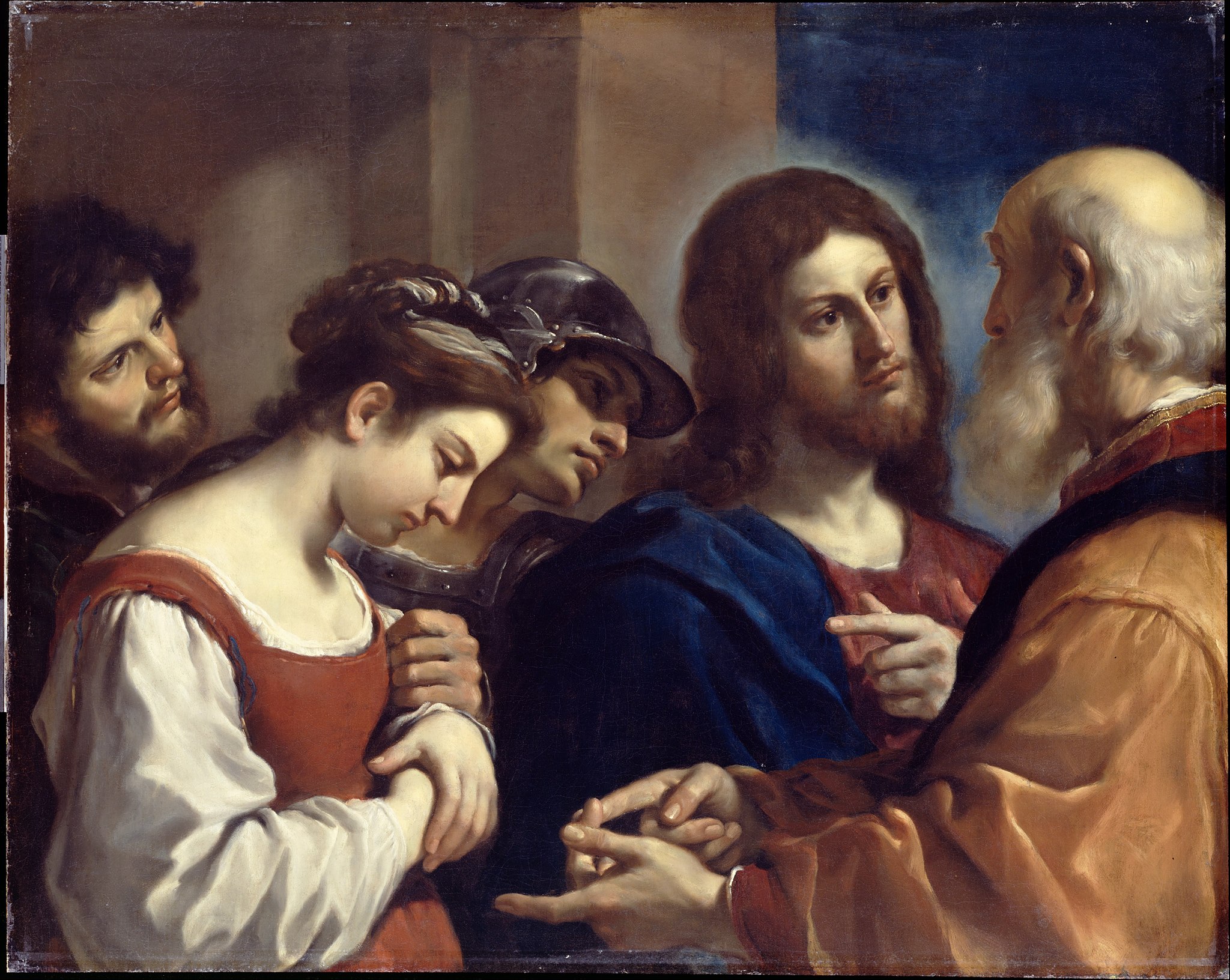
“The Woman taken in Adultery”, Guercino (Giovanni Francesco Barbieri)
c.1621, Dulwich Picture Gallery
Giovanni Francesco Barbieri was known as Guercino because of a squint
in one of his eyes. But obviously, with his good eye, he made up any
lack in his sight. In this work he captures that moment when the
woman who was caught in the act of adultery was made to stand in
shame before everyone. He adopts a half-length format to keep the
figures in close proximity to the viewer. Although these the figures look
so natural, they must have been very carefully posed. Caravaggio had
carefully posed his figures too and often had used a half-length format
to achieve this close up view point. Think of the famous betrayal of
Christ. However, it is unlikely that at the time Guercino painted this
work he had ever seen any of Caravaggio’s paintings. Here Jesus stands
beside the woman as her supporter and stares intently at the Pharisee
as if he can see into his soul. By far the most expressive element in this
work is the array of hands which in themselves convey the whole story.
The use of hands to express the drama is even more apt when you
consider that some of those present were ready to pick up stones to
throw at her. The Pharisee whom Jesus confronts is closest to the viewer
and he would probably be the first to throw a stone. Although he faces
away and remains anonymous, his hands are at the centre and the light
catches them. It looks like he is attempting to teach Jesus. The light
also catches the woman’s hands. They are pale in contrast with those of
the soldier who grasps her sleeve so roughly. She holds her hands
together, looking downward as if resigned to her fate. Little does she
know that Jesus is about to turn her whole situation around. Soon Jesus
will bend down and write on the ground with the finger of his hand,
and, then in truth, his mercy will prevail. The woman will be free to go.
The Catholic Chaplaincy serves the students and staff of the University of Edinburgh, Edinburgh Napier University and Queen Margaret University.
The Catholic Chaplaincy is also a parish of the Archdiocese of St Andrews and Edinburgh (the Parish of St Albert the Great) and all Catholic students and staff are automatically members of this parish.